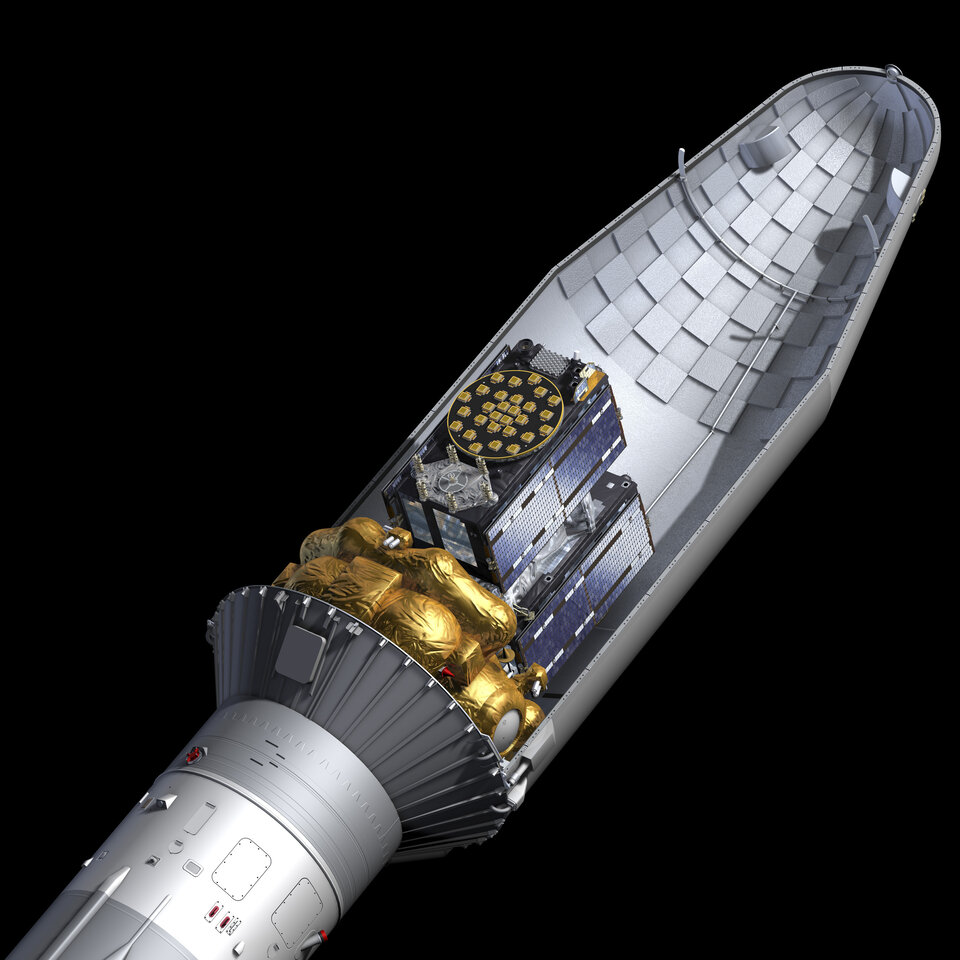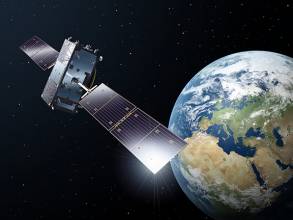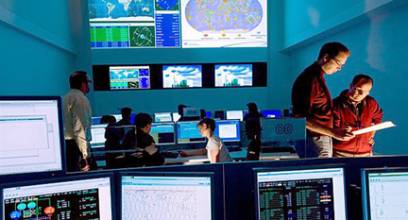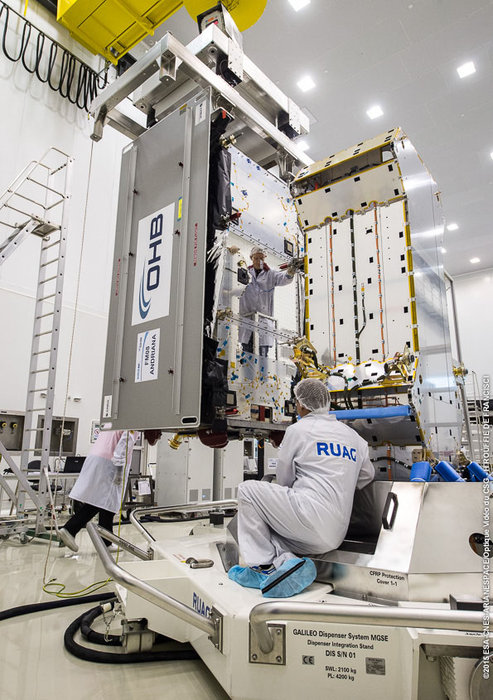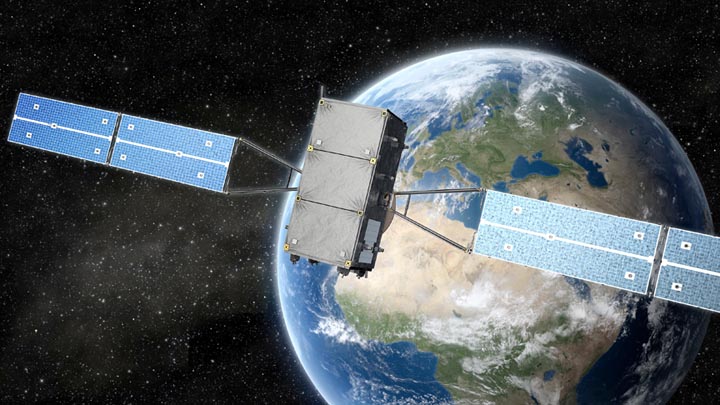The latest pair of Galileo satellites have touched down at Europe’s Spaceport in French Guiana, ahead of their launch together next month.
Within environmentally controlled containers, the European GNSS satellites crossed the Atlantic from ESA’s ESTEC Test Centre in Noordwijk, the Netherlands to Cayenne in French Guiana and were driven to the cleanroom surroundings of the spaceport in nearby Kourou. These are the first of the last batch of Galileo First Generation satellites, known as ‘Batch 3’, made up of 12 satellites in all. They are built by OHB SE in Bremen, Germany, with their navigation and search and rescue payloads contributed by Surrey Satellite Technology Ltd in Guildford in the UK.
[Image above: Galileos 27-28 seen atop their gold-wrapped Fregat upper stage within their Soyuz launcher fairing. All images courtesy European Space Agency.]
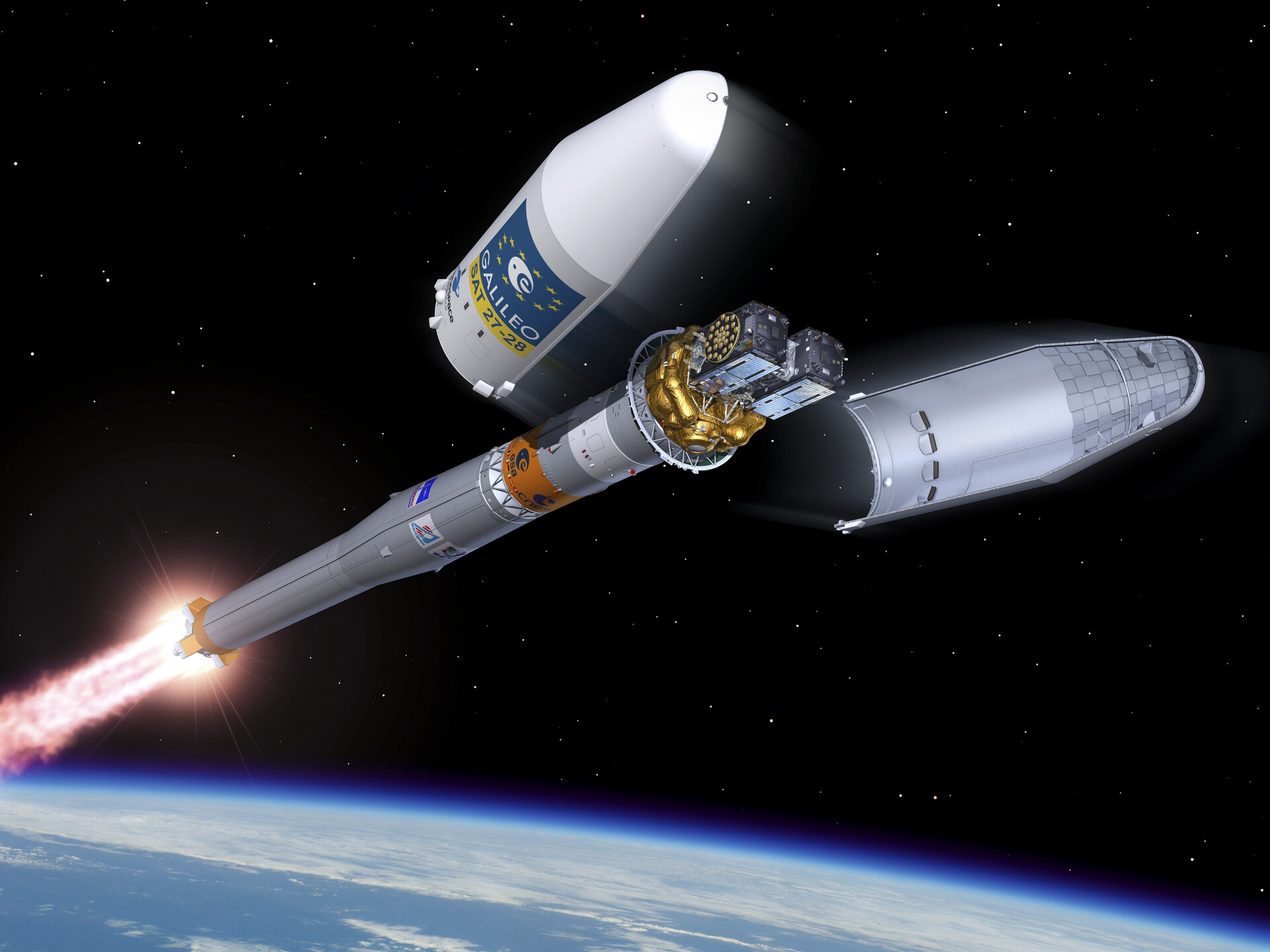
These two satellites will be launched together aboard a Soyuz launcher from Europe’s Spaceport in French Guiana. The launcher incorporates a Fregat upper stage, which will carry them to their planned 23,222 km altitude medium-Earth orbit. The satellites will add to the 26-satellite Galileo constellation already in orbit and delivering Initial Services around the globe.
Next month’s lift-off will be the 11th Galileo launch in 10 years. Two further launches are planned for next year, to allow Galileo to reach Full Operational Capability in its delivery of services, to be followed by the launches of the rest of the Batch 3 satellites which are currently all undergoing pre-flight testing.
In parallel to Batch 3’s completion of Galileo First Generation deployment, the new Galileo Second Generation satellites, featuring enhanced navigation signals and capabilities, are already in development with their deployment expected to begin by 2024.

